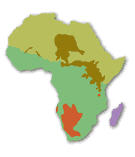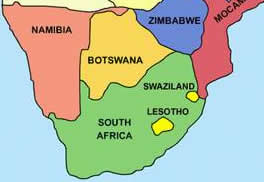 Introduction
Introduction
| Introduction The Khoisan language family is the smallest of the languages families of Africa. The name Khoisan derives from the name of the Khoi-Khoi group of South Africa and the San (Bushmen) group of Namibia. It is used for several ethnic groups who were the original inhabitants of southern Africa before the Bantu migrations southward and later European colonization. Archaelogical evidence suggests that the Khoisan people appeared in southern Africa some 60,000 years ago. Thus, the Khoisan languages may well be among the most ancient of all human tongues. Even though the Khoisan languages share similarities in their sound systems, their grammatical systems are quite unique. In the absence of historical records, it is difficult to determine their genetic relationship to each other and to other African languages. Today, the Khoisan languages are spoken only in southwestern Africa, in the region around the Kalahari Desert extending from Angola to South Africa, and in one small area of Tanzania. The Hadza and Sandawe languages in Tanzania are generally classified as Khoisan, but are extremely distant geographically and linguistically from the others. It is fair to say that of all the language families of the world, the Khoisan languages are among the most neglected by language scholars and the least studied.
Status Ethnologue lists 13 Khoisan languages with populations of 1,000 and over:
Nama is an official language of Namibia. The language is used at all levels of education and in the media. Click here to view a compelling National Geographic multimedia presentation on the San people. | ||||||||||||||||||||||||||||||||||||||||||||||
|





